本文由 Studio Vulkan 授权mooool发表,欢迎转发,禁止以mooool编辑版本转载。
Thanks Studio Vulkan for authorizing the publication of the project on mooool. Text description provided by Studio Vulkan.
Studio Vulkan:Buchegg住宅位于一个地形起伏的城市高地上,这块高地一侧紧邻着坡度较陡的街道,周围是繁忙的交通枢纽,另一侧靠近可以看到阿尔卑斯山美景的20世纪40年代住宅社区。在这个复杂的环境背景下,三个新的大体量建筑在布局上顺应街道走向,并围绕着一个大庭院排布。这种表面上看起来“直截了当”的开放式空间布局实际上成为了项目的主要挑战,也就是说,要在不削弱场地功能的条件下将大型住宅区嵌入到周围环境中,同时在不降低开敞空间占比的情况下形成可社交的场所。从概念想法和实际情况上来看,“多功能”和“协调均衡”是场地的两个代名词。
Studio Vulkan: The Buchegg housing development is situated on a topographical urban plateau between a dynamic traffic hub with steeply slopping street axes and a pleasant 1940s housing neighbourhood with views of the Alps. The new buildings respond to this complex context with three large-scale architectural volumes, which follow the lines of the streets and are arranged around a large courtyard. This ostensibly straightforward open-space layout in fact constitutes the major challenge of the project, namely to embed the large housing blocks in their surroundings without negating their impact and yet at the same time to form socially stageable niches without weakening the spacious expanse of the open surroundings. Conceptually and situationally the approaches taken can be best described with the terms “versatility” and “proportionality”.
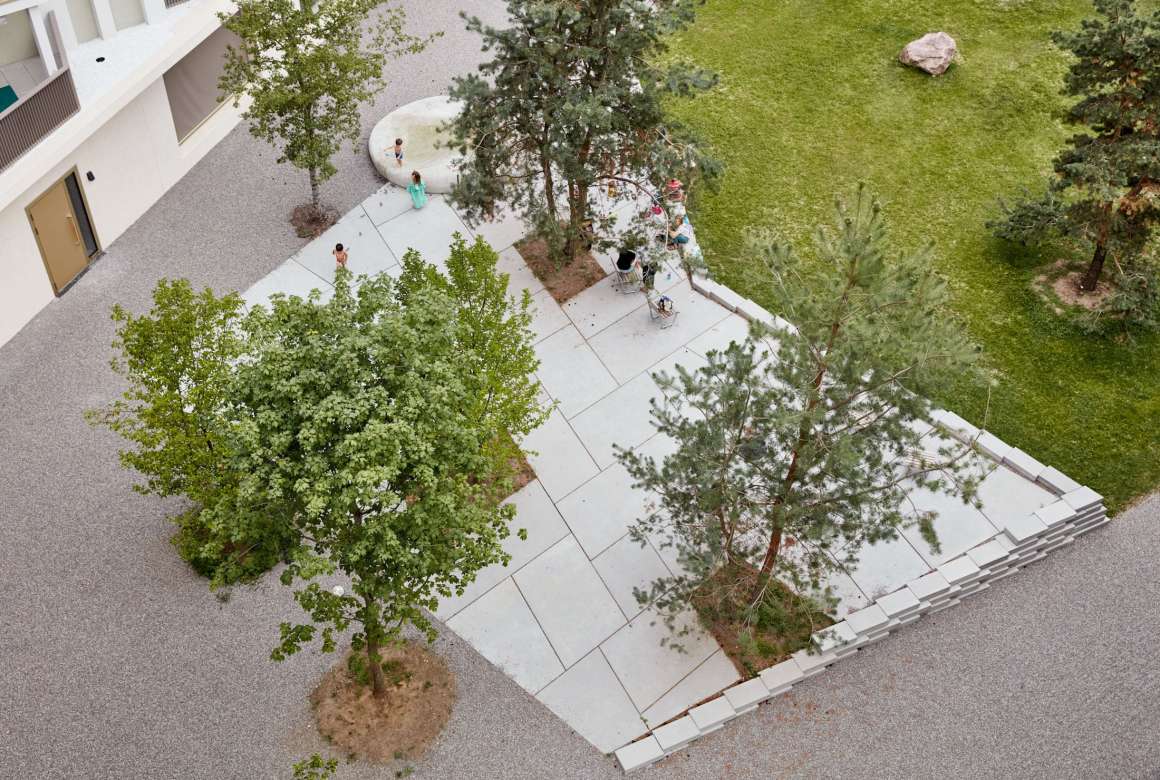
多功能 Versatility
场地的各个方面以及它们各自的场所氛围都是有形的,这得益于它们与周围环境在多个层面上相互协调、相互作用。多用途的阶梯状矮墙和植物群组合在一起,在环境中创造出了一个丰富有趣的场所,这将使外部环境在未来的许多年里为附近居民提供灵活多样的休闲活动。
The separate aspects of the site and their respective atmospheres are tangible, derived from the manifold synergies with their surroundings. This combined effect of the multi-usable and topographical small walls and the clusters of trees creates a complex palette of places and ambiances, meaning that the exterior layout will give the residents a recreational flexibility for many years to come.
▼多用途的阶梯状矮墙和植物群组合在一起,在环境中创造出了一个丰富有趣的场所 This combined effect of the multi-usable and topographical small walls and the clusters of trees creates a complex palette of places and ambiances.
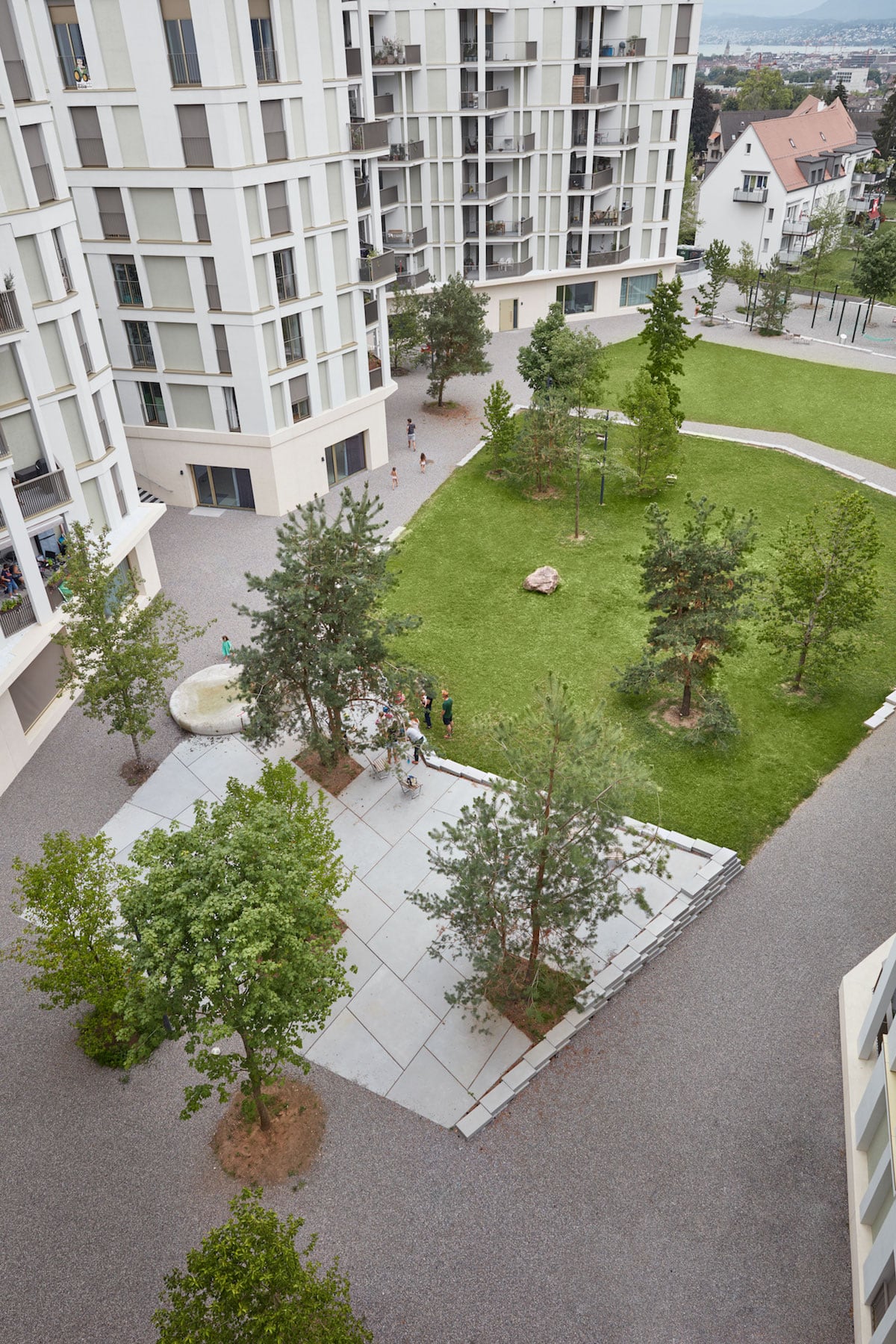

墙壁和小树林都分别在立面上产生了互动。作为休息和娱乐区,墙壁给小庭院带来了梯田般的视觉效果,形成了一系列的南北向区域:硬质活动区域、宽敞的草坪区和游戏区。开放空间的前部与城市环境以及整个内部庭院产生互动,带有喷泉的硬质活动区营造出一种特定的场所感,低矮、稀疏的树冠恰好在庭院最窄的地方产生了更加亲密而通透的密度值。大片的草地向前扩散变宽,与社区空间产生了协同效应。庭院的末端是朝南的儿童游乐场,面向阿尔卑斯山和这个城市。
The walls and copses establish a dialogue with the respective facades. As seats and play areas, the walls give the courtyard a terraced effect, creating a sequence of zones running from north to south: a hard-surface area, spacious grassed areas and a play area. The top end of the open space interacts with the urban environs as well as with the overall inner courtyard. The hard-surface area with its fountain creates a feeling of specific locality, its low, loosely thinned tree-canopy producing a more intimate and atmospheric density at precisely the point when the courtyard is least wide. The large grass area broadens out, creating a synergetic effect with the community space. The children’s playground forms the conclusion of the courtyard, orientated towards the view of the Alps, to the south and to the city.
▼带有喷泉的硬质活动区营造出一种特定的场所感 The hard-surface area with its fountain creates a feeling of specific locality.


▼墙壁给小庭院带来了梯田般的视觉效果 As seats and play areas, the walls give the courtyard a terraced effect.


协调均衡 Proportionality
美丽如画的树群在七八层高的建筑和城市环境之间起到了过渡的作用。树丛主要以松树为主,种植设计再现了20世纪70年代里Bucheggplatz广场的标志性特征,依偎在更广阔的城市背景之中。庭院内的景观树群充当了一个空间过滤器,形成了不同的空间和不同的场所氛围,并在各个公寓之间创造了视觉隐私。
Large, picturesque trees act as a mediation between the seven-to-eight-storey buildings and the urban surroundings. Pines are the predominate tree-type, a reiteration of the iconic 1970s characteristic of the Bucheggplatz, nestling the layout in its wider context. Inside the courtyard the scenic groups of trees act as a spatial filter, forming distinct zones and atmospheres and screening what would otherwise be clear sightlines between the individual apartments.
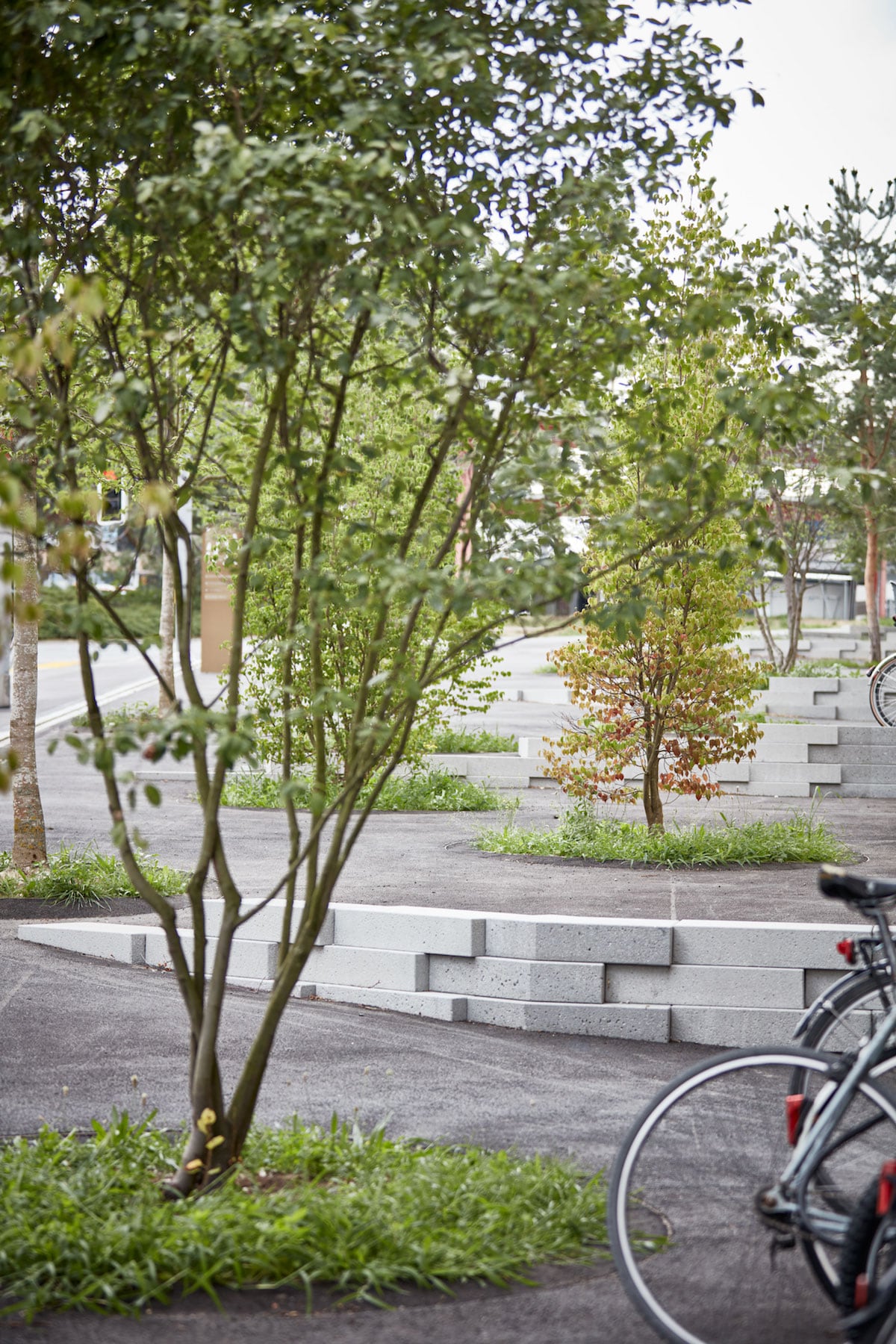

除了使用硬朗的形态来表达大型设计之外,设计师还创建了一个更亲密的尺度空间,通过适当的制定设计来激活地面层,将其作为一个活跃的社交空间,小型开花树木和地形墙的组合设计在街道上形成了一片舒适区,解决了不同地面层的入住率和入口问题,也为楼下的公寓提供了隐私性。
In addition to the large-scale design aspect, which is articulated using pronounced gestures, a more intimate scale is introduced, appropriately formulated in order to animate the ground-floor level as a social and lively space. A combination of small flowering trees and topographical walls address the various different ground-floor occupancies and entrances, generating amenity areas on the street and providing a visual privacy for the downstairs apartments.
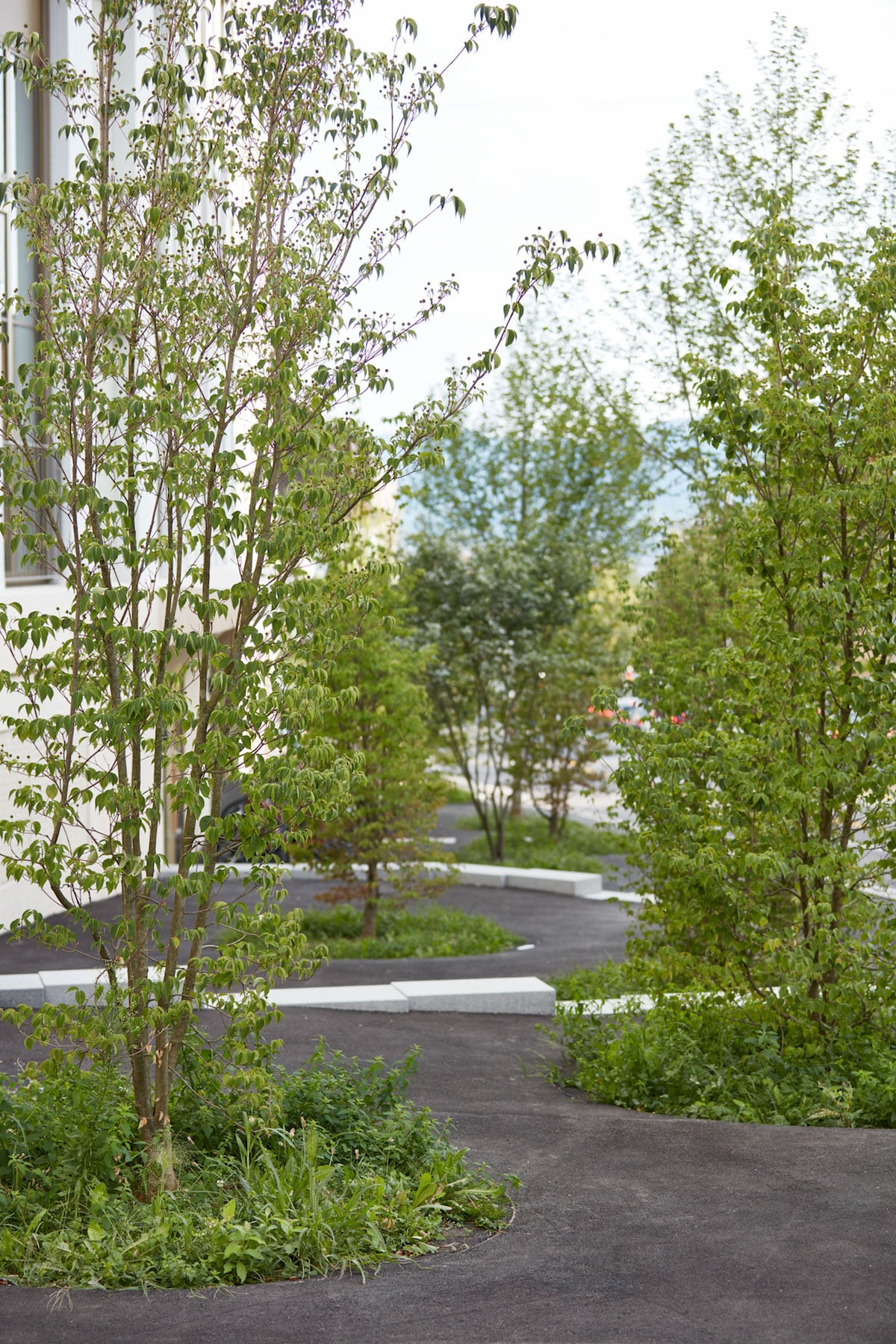

▼场地区位 Site plan

▼平面图 Plan
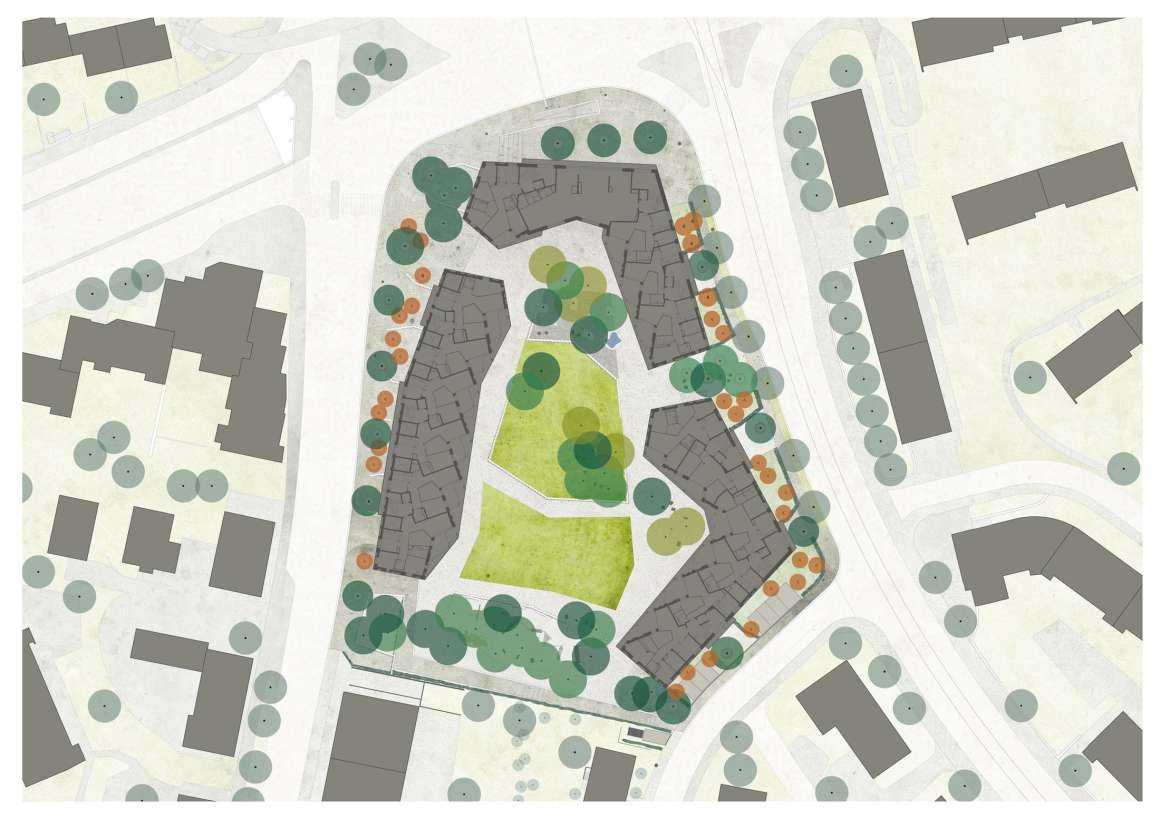
Address: Bucheggplatz, Zurich, Switzerland
Competition: 2011, 1st prize
Completion date: 2018
Client: Baugenossenschaft Waidberg, Zurich
Landscape architects: Studio Vulkan Landschaftsarchitektur, Zurich
Architects: Duplex Architekten, Zurich
Photo credit: Das Bild
Read more about: Studio Vulkan




0 Comments